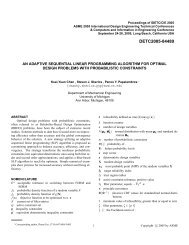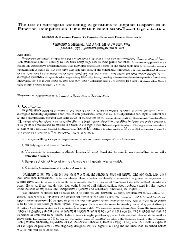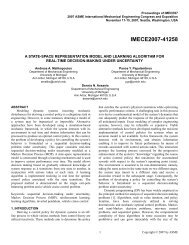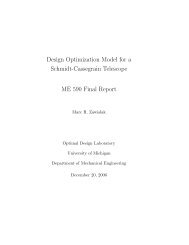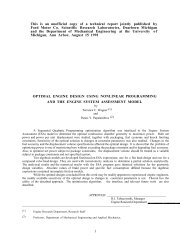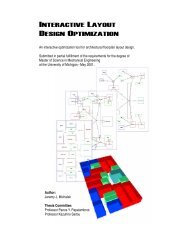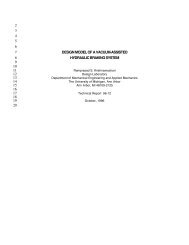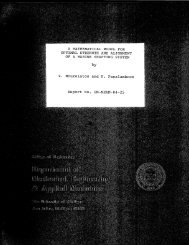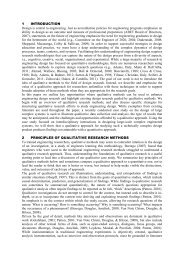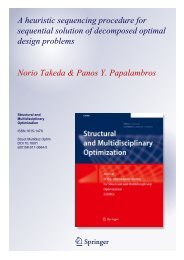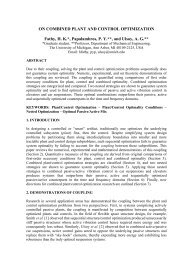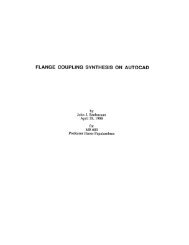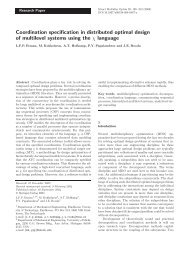Decomposition Analysis of an Automotive Powertrain Design ...
Decomposition Analysis of an Automotive Powertrain Design ...
Decomposition Analysis of an Automotive Powertrain Design ...
Create successful ePaper yourself
Turn your PDF publications into a flip-book with our unique Google optimized e-Paper software.
to be stalled (Rs = 0). Equation (33) defines a unique speed in terms <strong>of</strong> Ko. The stall speed,<br />
N stall , is the speed at which the impeller rotates while the turbine is stalled. From Equation (33),<br />
the stall speed depends on the input torque <strong>an</strong>d the capacity factor at Rs = 0, K o , according to<br />
N stall = K o T i 0.5 . (35)<br />
The domin<strong>an</strong>t design variables in converter design are Dc <strong>an</strong>d the blade <strong>an</strong>gle, αi. Using<br />
functions in Eq. (33) <strong>an</strong>d (34) as a base design, scaling laws c<strong>an</strong> be developed. If similarity is<br />
maintained in the circuit path, while D c is varied, the torque ratio curve remains virtually<br />
unch<strong>an</strong>ged, but K-factor ch<strong>an</strong>ges according to a similarity law, such as,<br />
D c ′/ D c = (Ko/Ko′ ) 0.4 . (36)<br />
A smaller converter effects a higher K; a higher K implies a higher stall speed for a given input<br />
torque. Blade <strong>an</strong>gles cause subst<strong>an</strong>tial ch<strong>an</strong>ge in both the torque ratio R t <strong>an</strong>d the K-factor, <strong>an</strong>d a<br />
simple scaling factor c<strong>an</strong> be used to represent the effect based on data presented in J<strong>an</strong>dasek (op.<br />
cit.), namely,<br />
α t = (R to ′ / R to ) (37)<br />
K o ′/K o = (α t ) 1.7 . (38)<br />
The scaling factor, α t , c<strong>an</strong> then be used as a variable to design a new converter. It defines<br />
the K-factor, the torque ratio, <strong>an</strong>d from Eq. (35) a new converter size c<strong>an</strong> be determined according<br />
to<br />
D c ′/ D c = (α t ) -.68 (39)<br />
Equations (32)-(34) <strong>an</strong>d (36)-(39) serve to define the torque converter.



